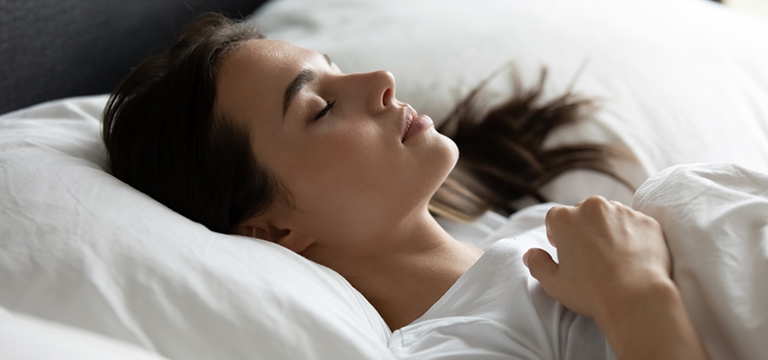The Best Sleep Positions for Your Back

About 7.7 million Americans visit chiropractors each year to look for treatment for back pain.* Common cited reasons for back pain include accidents, sports injuries and muscle strains. However, most back pain typically stems from bad posture, how you sleep and other lifestyle habits.
It’s no surprise sleep is a common source of back pain considering that we spend about a third of our entire lives asleep or trying to fall asleep.The position you sleep in is one of the biggest factors in your back health. Poor positioning can misalign your spine and put unnecessary stress and strain on it. In most cases, you won’t need to totally change how you sleep. Some simple modifications are enough to support your back.
Sleeping on your back
Being on your back is one of the best positions to relieve back pain. This is due to your weight being evenly distributed across your body. In turn, this puts less strain on your body’s pressure points.
Lay flat on your back and place a pillow underneath your knees and keep your spine neutral. This helps maintain your back’s natural curve. If you’re looking for extra support, place a small, rolled up towel under the small of your back.
For individuals with isthmic spondylolisthesis, a condition that affects the lower vertebrae, sleeping on your back while reclined may be more comfortable. This helps to reduce the pressure on your spine.
Sleeping on your side
If sleeping on your back doesn’t feel comfortable, try sleeping on your side with a pillow between your knees.
Make sure the whole side of your body is making contact with the mattress. You can place a small pillow between your waist and mattress if there’s a gap.
Keep in mind that sleeping on your side won’t properly support your back without a pillow between your knees. Also, avoid sleeping on only one side of your body. Over time, this can cause your body to develop scoliosis and/or an imbalance in your muscles.
Individuals with a herniated disc may find sleeping on their side curled up in a fetal position most comfortable.
Sleeping on your stomach
Lying on your stomach tends to put stress on your neck and back, but it can properly support your body with some modifications.
You can relieve the pressure on your back by placing a pillow underneath your abdomen and pelvis. Add a pillow underneath your head if it feels comfortable.
Sleeping on your stomach with a pillow underneath is especially beneficial for individuals who have degenerative disc disease. That’s because it relieves stress that is placed on the spaces between your discs.
Other things to consider
Your pillow and mattress are also important factors at play. You can find them in all sorts of materials, forms and levels of firmness. Everyone’s sleep preferences are different so find the combination that works best for you.
Bottom line, try out other sleep habits and see what feels the best. Listen to your body—if it doesn’t feel good for your back, it probably isn’t.
If you are looking for help managing your chronic pain, visit our Pain Management Resource Center. You can find the latest info about chronic pain and access tools to help you find care that fits your needs.*https://www.webmd.com/back-pain/guide/chiropractic-pain-relief
Source:
https://www.healthline.com/health/healthy-sleep/best-sleeping-position-for-lower-back-pain


